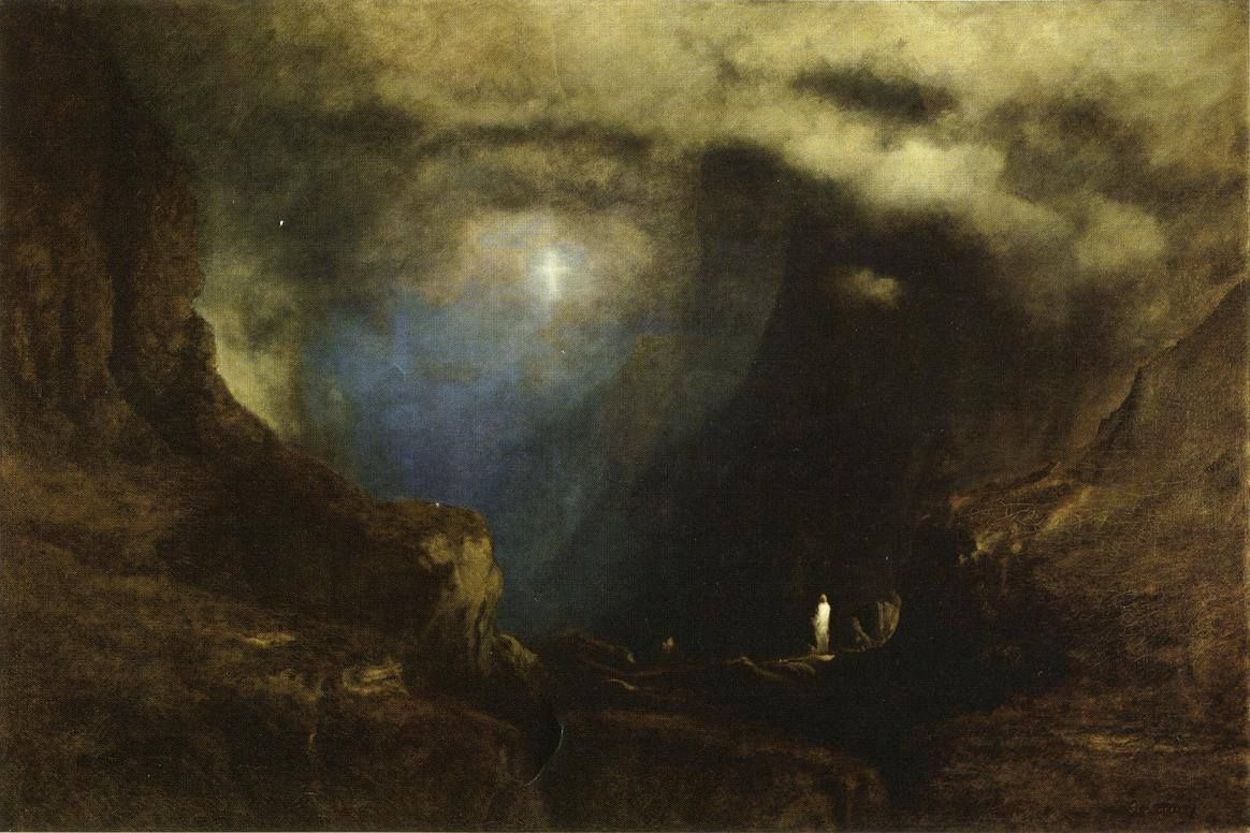George Inness was a 19th-century American landscape painter. He was influenced by the Hudson River School, which he’s sometimes considered to be part of, as well as the Barbizon movement in France. He is also associated with Tonalism. This painting style was made famous by Whistler, and it favored subtle and evocative color harmonies above all else. Inness was also drawn to philosophy, particularly a form of spiritual Christianity called Swedenborgianism, which was popular with American artists and writers of his era. His interest in Swedenborgian spirituality strongly influenced his paintings, and that’s particularly clear in this work. Swedenborgianism was based on writings by Swedish scientist and philosopher Emanuel Swedenborg (1688-1772), who wrote extensively about a series of visions where he felt that God had explained the true meaning of the Bible to him. For Inness and other 19th-century spiritualists, Swedenborgianism was closely connected to the followers’ own visions and inner spiritual life, which they felt were as real and important as the material world. The New Church, which practices today, is the modern form of the religion.
The Valley of the Shadow of Death was one of three works that Inness was commissioned to make based on Swedenborgian themes. The series was entitled “The Triumph of the Cross” and was meant to represent a sort of spiritual pilgrimage. This is the only work in the series to survive. According to Inness’s writings, the brilliant cross lighting up the sky is meant to represent the pilgrim’s faith, since “his light hereafter must be that of faith alone” (Bell, George Inness and the Visionary Landscape, 83). Below it, the faithful pilgrim appears standing in a dark cavern. This beautiful painting is mysterious, and it defies an easy narrative interpretation.
- Alexandra Kiely
P.S. Read about six female artists of the Hudson River School!


 George Inness
George Inness